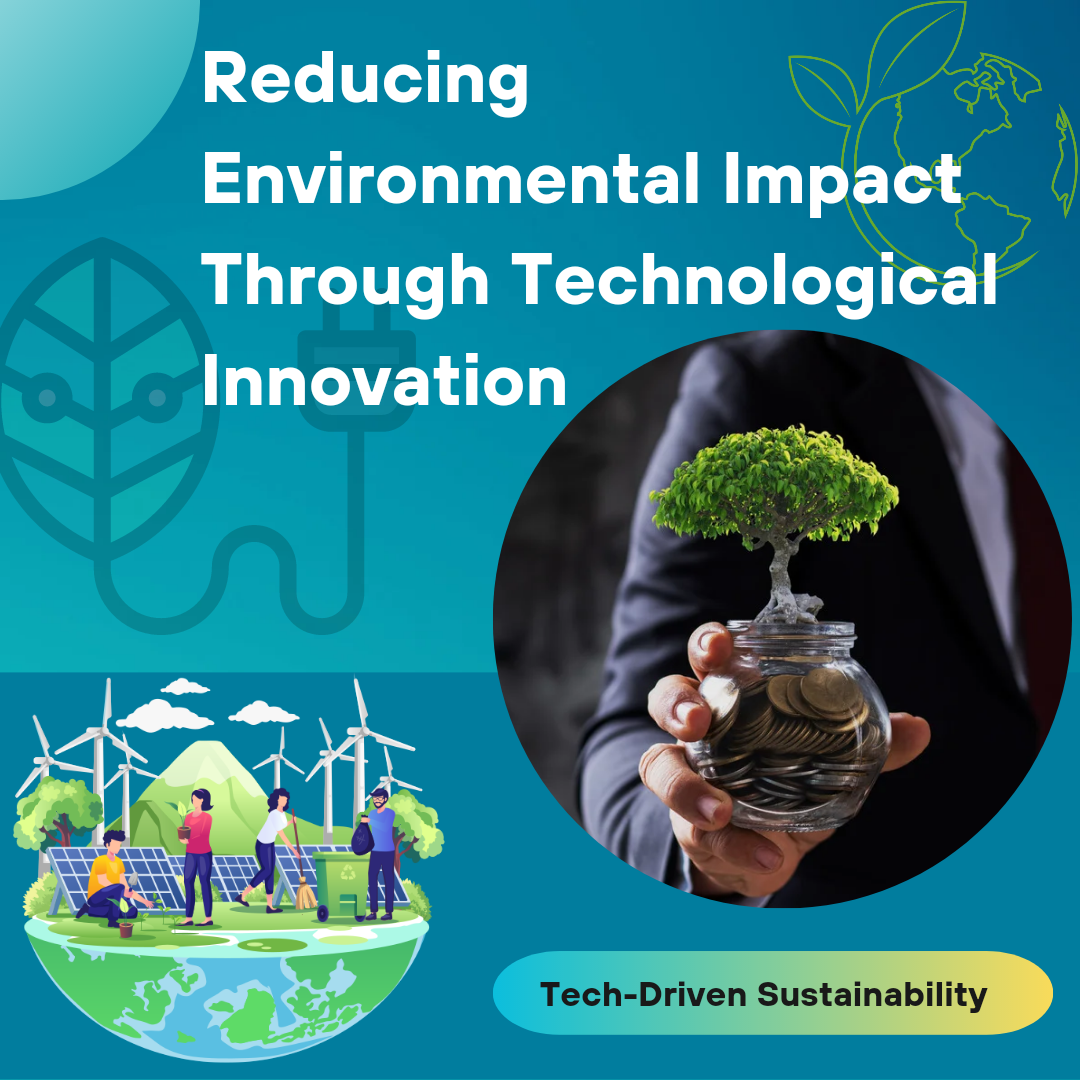Inquire
Reducing Environmental Impact Through Technological Innovation

Reducing Environment Impact Through Technology Innovation
Introduction :
As concerns about climate change and environmental degradation continue to grow, the urgent need to reduce our ecological footprint becomes increasingly evident. Technological innovation offers promising solutions to address these challenges and mitigate the impact of human activities on the environment. This essay explores the ways in which technology is driving positive change, enabling sustainable practices, and revolutionizing industries to minimize environmental harm.
Renewable Energy Technologies :
One of the most significant areas of technological innovation focused on reducing environmental impact is the development and adoption of renewable energy technologies. Solar panels, wind turbines, and hydroelectric power are rapidly expanding and gradually replacing fossil fuel-based energy sources. Continued research and innovation in this sector have led to increased efficiency, reduced costs, and improved energy storage capabilities, making renewable energy sources more accessible and economically viable.
Smart Grids and Energy Management System :
The integration of smart grids and advanced energy management systems is another area where technology is making a positive impact. Smart grids enable efficient distribution of electricity, optimizing energy consumption and reducing waste. These systems monitor energy usage, detect malfunctions, and facilitate demand-response programs, allowing consumers to adjust their energy consumption based on real-time data. By minimizing energy loss and peak demand, smart grids contribute to lower carbon emissions and a more sustainable energy infrastructure.
Sustainable Transportation Solutions :
The transportation sector is a major contributor to greenhouse gas emissions. However, technology is driving innovation in sustainable transportation solutions. Electric vehicles (EVs) are becoming increasingly popular, with advancements in battery technology extending their range and reducing charging time. Additionally, autonomous vehicles and ride-sharing platforms have the potential to improve traffic efficiency, decrease fuel consumption, and reduce the number of vehicles on the road. Further developments in alternative fuels, such as hydrogen and biofuels, are also promising avenues for reducing emissions in the transportation sector.
Circular Economy and Resource Efficiency:
Technological innovation is instrumental in transitioning from a linear economy to a circular economy, where waste is minimized, and resources are maximally utilized. Advanced recycling technologies enable the extraction and reuse of valuable materials from waste streams, reducing the need for raw materials extraction and minimizing environmental degradation. Furthermore, innovative manufacturing processes, such as 3D printing, allow for more efficient use of materials and customization of products, resulting in reduced waste and energy consumption.
Internet of Things (IoT) and Environmental Monitoring :
The Internet of Things (IoT) has the potential to revolutionize environmental monitoring and management. By connecting various devices and sensors, IoT systems enable real-time data collection and analysis, facilitating proactive environmental interventions. For instance, IoT-based solutions can monitor air quality, water resources, and soil conditions, providing early warning systems for potential environmental hazards. This data-driven approach enables policymakers, businesses, and individuals to make informed decisions, implement sustainable practices, and mitigate environmental risks.
Conclusion :
Technological innovation is playing a pivotal role in reducing environmental impact and promoting sustainability. Through advancements in renewable energy technologies, smart grids, sustainable transportation, circular economy practices, and IoT-based environmental monitoring, we can mitigate the effects of climate change and foster a more sustainable future. However, innovation alone is not sufficient; it must be coupled with supportive policies, public awareness, and widespread adoption. By harnessing the power of technology and collective action, we can create a greener world for future generations

- Managerial Effectiveness!
- Future and Predictions
- Motivatinal / Inspiring
- Other
- Entrepreneurship
- Mentoring & Guidance
- Marketing
- Networking
- HR & Recruiting
- Literature
- Shopping
- Career Management & Advancement


 SkillClick
SkillClick